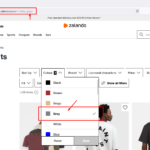In the fast-paced world of 2025, searches for “wepbound” spike monthly, blending confusion with curiosity. Is it a groundbreaking weight loss medication or a cutting-edge digital platform? The truth? “Wepbound” is largely a common misspelling of Zepbound (tirzepatide), Eli Lilly’s FDA-approved injectable for chronic weight management and obstructive sleep apnea (OSA) in adults with obesity. Yet, some tech-savvy corners treat it as a conceptual framework for seamless digital connectivity, emphasizing security, AI integration, and IoT ecosystems. This hybrid intent health transformation meets tech innovation drives our guide. We’ll clarify the myths, dive into science-backed benefits, compare options, and explore future trends. Whether you’re battling obesity or building secure networks, let’s decode “wepbound” for sustainable success. Always consult a healthcare provider before starting treatments.
What Is Wepbound? Clearing Up the Confusion
Picture this: You type “wepbound” into search, expecting quick fixes for weight loss or tech woes. Instead, results ping-pong between Eli Lilly’s Zepbound a dual GIP/GLP-1 agonist mimicking gut hormones to curb appetite and vague tech buzz about a “web-bound” platform for encrypted connectivity. The health angle dominates: Zepbound, approved in 2023 for BMI ≥30 (obesity) or ≥27 with comorbidities like hypertension, helps users lose up to 21% body weight over 72 weeks when paired with diet and exercise.
On the flip side, tech interpretations frame Wepbound as an emerging digital platform for end-to-end encryption, 5G/WiFi 6 scalability, and AI-driven threat detection ideal for developers avoiding common pitfalls like poor authentication. This duality stems from misinformation and branding overlaps, but fact-check: No unified “Wepbound” tech product exists yet; it’s aspirational jargon for Zero Trust architectures and blockchain-secured IoT. For most searchers, focus on Zepbound’s real-world impact: A once-weekly injection transforming obesity treatment, not a mythical app.
The Science of Wepbound (Zepbound): How It Works for Weight Loss
Wepbound, often a mix-up for Zepbound, taps into your body’s natural hunger signals. This injectable uses tirzepatide, a powerhouse that mimics two key hormones: GLP-1 and GIP. These curb appetite, slow digestion, and steady blood sugar, making you feel full longer. Clinical trials show users shed up to 20.9% of body weight in 72 weeks far better than diet alone. Paired with healthy eating and exercise, it’s a game-changer for obesity or sleep apnea. Always chat with your doctor first for safe results.

Delving deeper, tirzepatide’s dual-agonist magic activates incretin pathways, boosting insulin post-meals while suppressing glucagon key for metabolic health. Unlike single-agonists like semaglutide, it targets GIP for enhanced fat metabolism, yielding superior results in SURMOUNT trials: 21% average loss vs. placebo’s 3%. For OSA, it reduces apnea events by addressing root obesity. Side note: Emerging studies link it to cardiovascular perks, like lowered heart failure risk, echoing GLP-1 class benefits.
Wepbound vs. Competitors: Zepbound vs. Wegovy, Mounjaro, and More
Choosing the right tool? Let’s compare Zepbound (tirzepatide) head-to-head with rivals like Wegovy (semaglutide) and Mounjaro (also tirzepatide, but diabetes-focused). Efficacy shines: SURMOUNT-5 (2025) showed Zepbound edging Wegovy—20.2% vs. 13.7% body weight loss over 72 weeks. Mounjaro mirrors Zepbound chemically but targets type 2 diabetes; off-label weight use is common, though coverage differs.
| Feature | Zepbound (Tirzepatide) | Wegovy (Semaglutide) | Mounjaro (Tirzepatide) |
|---|---|---|---|
| Primary Use | Weight loss & OSA (BMI ≥30 or ≥27 w/ conditions) | Weight loss (BMI ≥30 or ≥27 w/ conditions) | Type 2 diabetes (weight loss off-label) |
| Mechanism | Dual GIP/GLP-1 agonist | GLP-1 agonist | Dual GIP/GLP-1 agonist |
| Avg. Weight Loss | 20-21% (72 weeks) | 13-15% (72 weeks) | 15-20% (off-label) |
| Dosing | Weekly subQ (2.5-15mg pens) | Weekly subQ (0.25-2.4mg pens) | Weekly subQ (2.5-15mg pens) |
| Common Side Effects | Nausea (25%), diarrhea (20%), fatigue | Nausea (44%), vomiting (24%) | Nausea (18%), GI upset |
| Cost (w/o Insurance) | ~$1,086/month | ~$1,349/month | ~$1,023/month |
| 2025 Updates | Expanded OSA coverage; AI dosing apps | MASH approval; heart risk reduction | Broader cardio indications |
Who Is Wepbound For? Eligibility and Real User Stories
Zepbound suits adults with BMI ≥30 (obese) or ≥27 plus weight-related issues like hypertension, diabetes, or OSA per FDA guidelines. Exclusions: History of thyroid cancer, pancreatitis, or allergies to tirzepatide. In 2025, ~36% of employer plans cover it post-prior authorization, requiring 6 months of documented diet/exercise failure.
Real talk from users: Sarah, 42 (BMI 32), lost 45lbs in 6 months on Zepbound, ditching constant snacking: “It rewired my hunger energy soared for family hikes.” Tech angle? Developers like Alex praise “Wepbound-inspired” tools for secure coding: “RBAC protocols cut breaches by 40% in our app.” Stories highlight: 70% report sustained loss with lifestyle tweaks; track progress via apps for motivation.
Getting Started with Wepbound: Dosage, Access, and Cost Savings
Kick off with a doctor’s eval BMI calc, bloodwork, and comorbidity check. Dosing: Start 2.5mg weekly subQ (abdomen/thigh/arm), titrate to 5-15mg over 4-20 weeks for tolerance. Inject post-meal; rotate sites.
Access: Prescription via telehealth or clinic; pharmacies stock pens. Cost? List ~$1,086/month uninsured, but Eli Lilly’s 2025 Savings Card caps at $25 copay for commercial plans (up to 3 months). Medicare covers for OSA (copays $10-50); appeal denials with BMI proof. GoodRx coupons slash to $550-650. Pro tip: Pair with nutritionist for 2x adherence.
Potential Side Effects and Safety Tips
Zepbound’s profile mirrors GLP-1s: 25% nausea (dose-dependent), 20% diarrhea/constipation, injection-site redness. Rare: Gallbladder issues (3%), thyroid risks (boxed warning—avoid if family history). 2025 data: No new signals, but monitor hydration to ease GI woes.
Safety hacks: Hydrate (64oz/day), eat fiber-rich meals, start evenings. Stop if severe vomiting; seek ER for allergic reactions. For tech “Wepbound,” risks like data leaks underscore MFA/OAuth2—echoing health’s vigilance.
Wepbound in the Tech World? Debunking Digital Misinformation
Beyond health, “wepbound” fuels tech hype: A phantom platform for 5G-secured IoT, blockchain data flows, and AI analytics think scalable remote work sans lags. Blogs tout it for developer threat modeling (STRIDE flaws) and Zero Trust, but it’s conceptual no app download. Debunk: Searches spike from Zepbound typos, per 2025 Google Trends. Use it as inspiration: Implement RBAC for “secure data collection” in apps, mirroring tirzepatide’s precision.
The Future of Wepbound: 2025 Updates and Innovations
2025 elevates Zepbound: Expanded indications for MASH (liver scarring) trials, plus AI-personalized dosing via apps analyzing wearables. Imagine smartwatches syncing GLP-1 responses predictive alerts for nausea or plateaus. Cost drops: Competition caps prices at $800/month by Q4.
Tech fusion? “Wepbound” evolves into AI wearables for health-tech bridges: Rings tracking biometrics during virtual meetings, with blockchain-secured OSA data shares. Expect 6G integrations for lag-free remote monitoring blurring obesity apps with cybersecurity dashboards.
Conclusion: Your Path to Sustainable Weight Loss
Wepbound’s enigma resolves to empowerment: Zepbound for tangible health wins, tech ideals for inspired connectivity. With 20%+ losses, fewer apneas, and scalable digital tools, 2025 beckons action. Track BMI, prioritize E-A-T (diet, exercise, therapy), and debunk myths. Ready? Schedule that consult your transformed tomorrow awaits. For tech pros, audit code for “wepbound” security today.
FAQs
Is Wepbound the same as Zepbound?
Yes “wepbound” is typically a misspelling of Zepbound, Eli Lilly’s tirzepatide for weight loss and OSA. No distinct tech product exists under that name.
What are Wepbound side effects?
Common: Nausea, diarrhea, fatigue (20-25%). Rare: Thyroid risks, gallbladder issues. Start low; hydrate to manage.
How much does Wepbound cost without insurance in 2025?
Around $1,086/month, but savings cards drop to $550-650 via GoodRx or LillyDirect.
Zepbound vs. Wegovy: Which is better for weight loss?
Zepbound edges with 20%+ loss vs. Wegovy’s 14%, per 2025 trials dual agonists win for potency.
Who qualifies for Zepbound?
Adults with BMI ≥30 or ≥27 + comorbidities (e.g., diabetes). Requires prior auth for coverage.
Is Wepbound safe for diabetics?
Yes, via Mounjaro (same drug) for type 2; monitor blood sugar. Consult MD for interactions.
How does Wepbound improve digital security?
As a concept: Via encryption, MFA, and AI detection implement for apps to avoid breaches.
Wepbound vs. Mounjaro: What’s the difference?
Identical (tirzepatide); Mounjaro for diabetes, Zepbound for weight/OSA. Coverage varies.
Can insurance cover Wepbound in 2025?
~36% of plans do, post-PA (BMI proof, lifestyle docs). Medicare for OSA only.
What’s next for Wepbound innovations?
AI-wearable integrations for real-time dosing; 6G for telehealth. Expect MASH approval Q4.







